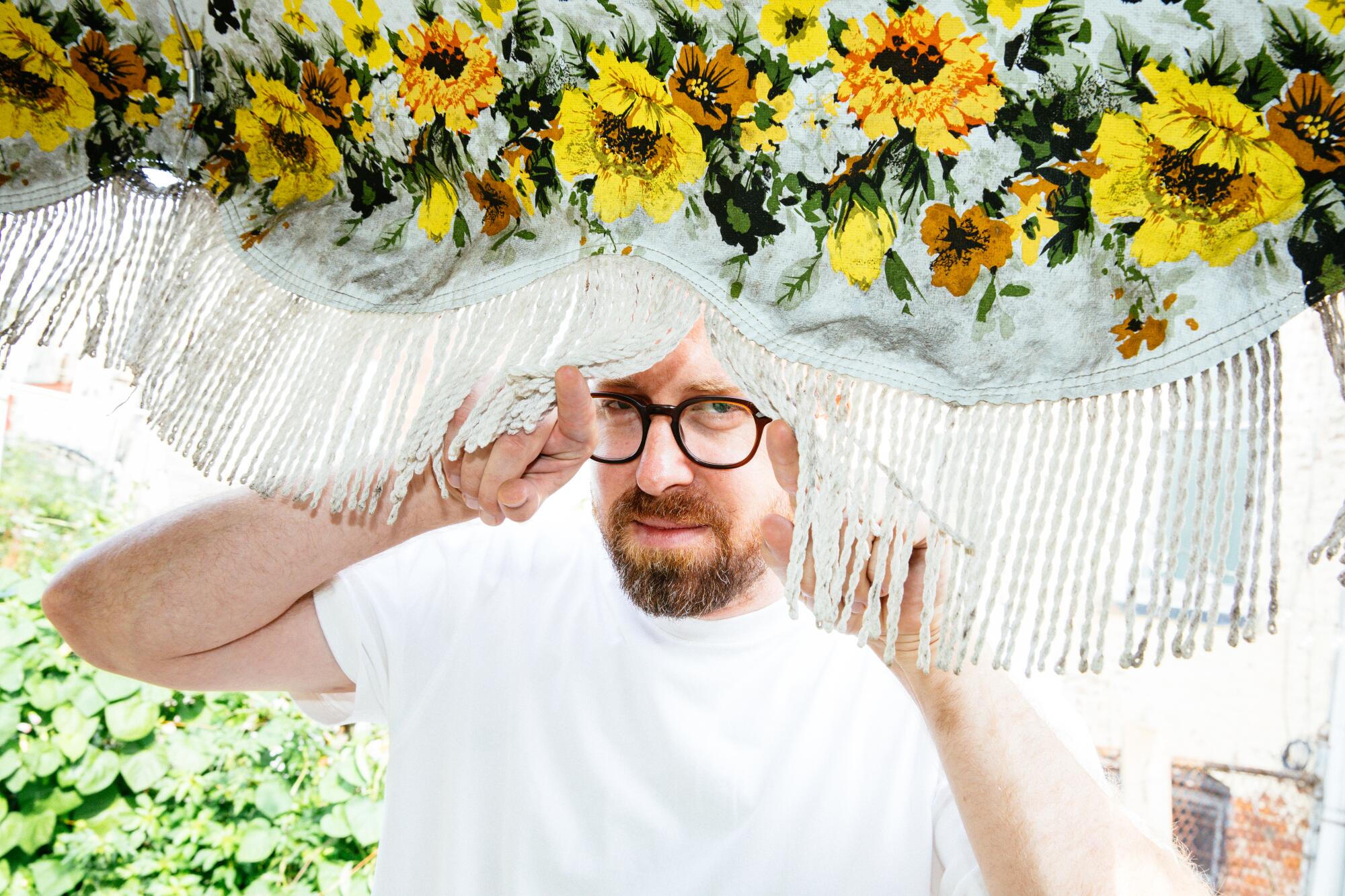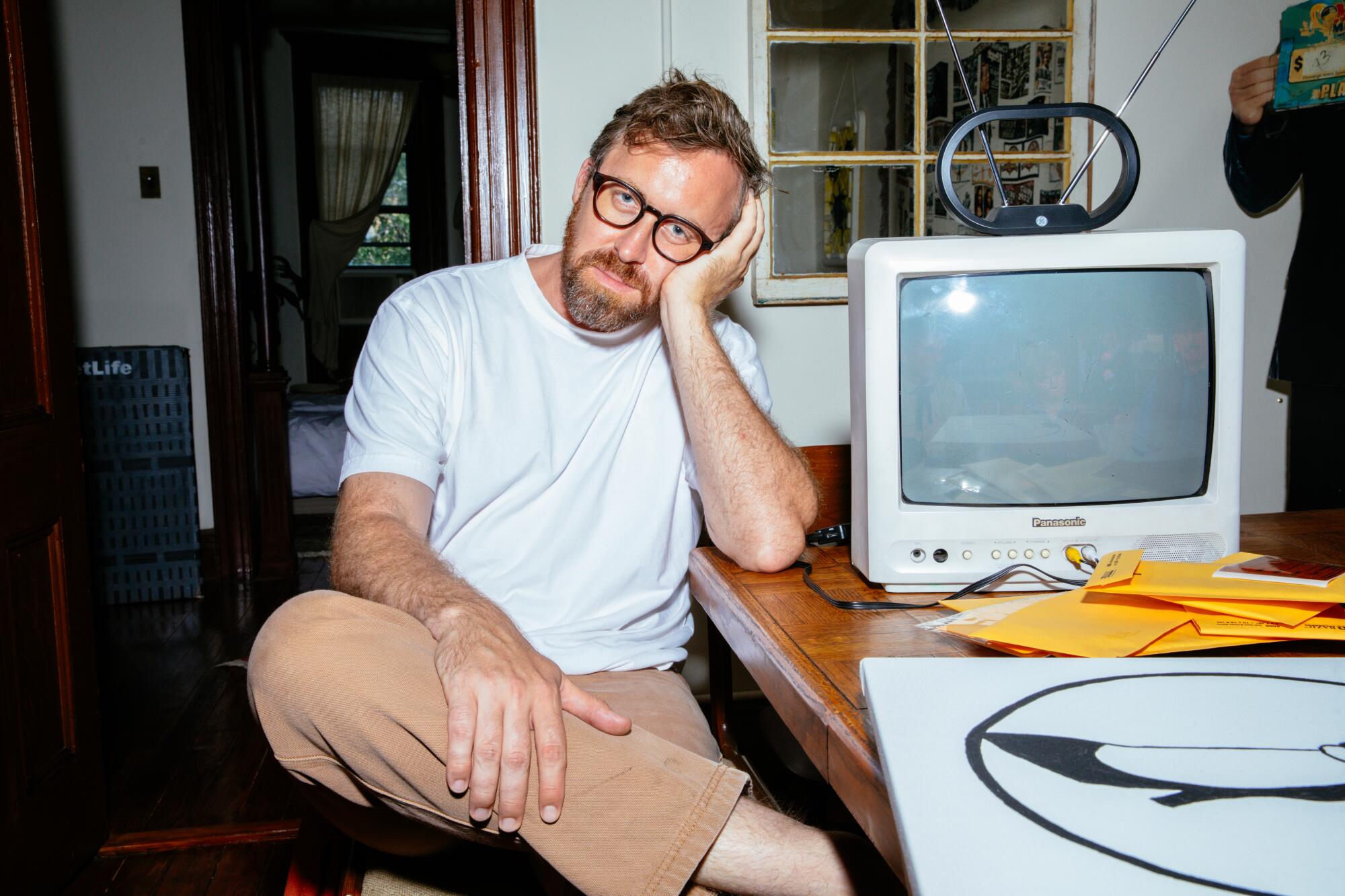It didn’t seem like a difficult question: How would John Wilson describe “How to With John Wilson”? But after a long pause, the 37-year-old filmmaker chuckles sheepishly, defeated. “This continues to be a challenge for me,” he admits over Zoom. “I still don’t know how to pitch this show, even after a decade of making this work.”
Let me give it a try: Over three terrific seasons, “How to” forged its own inimitable path in the nonfiction space, each episode initially promising to provide viewers with practical advice — “How to Make Small Talk,” “How to Split the Check” — before host John Wilson’s investigation into the topic invariably leads him into funny, uncharted new territory. Buttressed by B-roll of odd sights on the streets of New York, ironically juxtaposed with Wilson’s amusingly low-key voice-over, “How to” never mocked the bizarre subjects who entered its orbit — whether UFO eyewitnesses or vacuum-cleaner collectors — instead crafting movingly humane snapshots of proudly peculiar individuals.
Wilson knew this season would be the last, and he wanted to end on a high note. He succeeded, earning Emmy nominations for writing and hosting a nonfiction program. Actually, “How to” had been part of Wilson’s life long before it premiered on HBO in October 2020: In the early 2010s, he began making independent short films in a similar vein with such titles as “How to Keep Smoking.” As he puts it, “It would take me a year to make 10 minutes’ worth of stuff” — but once HBO greenlighted the series, executive produced by Nathan Fielder (“The Curse”), Wilson learned how to work in a more focused manner.
John Wilson with his camera in “How to With John Wilson.”
(HBO)
“Having structure is good, but being accountable to other people is also really important,” he says, exuding the same sweet, anxious demeanor as on “How to.” “You’re barreling toward a lock date, and you can’t overthink things for too long, which is a dilemma I usually have whenever I’m just by myself. That kind of intense, chaotic production ended up creating these weird moments of serendipity, just by the sheer momentum of the process.”
Where Fielder’s groundbreaking “Nathan for You” was sometimes accused of being mean to its average-American subjects, “How to” is almost miraculously evenhanded, letting people like an elderly Arizona resident named Mike, who in the series finale explains why he self-castrated, tell their stories free of ridicule.
“People want to be memorialized,” Wilson suggests when explaining how he gets individuals to open up. “If you’re meeting them on their terms in a comfortable space for them, then they feel like they’re in control, which is why I always like to go to people’s houses or bedrooms.” As for avoiding turning his subjects into objects of scorn, Wilson says, “I don’t want to make anything that I think will upset them. I have to make the work as if I’m going to see them every day.”

It’s not just John Wilson’s subjects who are revealed in “How to,” he’s slowly used the forum to unearth parts of himself.
(Peter Fisher / For The Times/Peter Fisher for Los Angeles Times)
But it’s not just his subjects who are revealed — slowly, “How to” became Wilson’s forum to unearth parts of himself. In one poignant episode, he briefly but tenderly acknowledges a period in which he was “fooling around” with a middle-school male friend, which left them feeling confused and ashamed about their sexuality.
“In the third season, I wanted to put as much stuff in there as I could,” Wilson says. “I don’t always talk about deep emotional stuff with friends or colleagues — this work is a container for all those feelings. I just try to make it as if no one else is watching.” Have his friends been surprised by what they’ve learned about him from “How to”? “I don’t usually ask anyone how they feel about it,” he replies. “They might be surprised, and they might talk about it on their own. But I just assume that no one is talking about me anywhere else if I can’t hear it.”

“I don’t always talk about deep emotional stuff with friends or colleagues — this work is a container for all those feelings. I just try to make it as if no one else is watching,” says John Wilson.
(Peter Fisher / For The Times/Peter Fisher for Los Angeles Times)
Maybe it’s best that he can’t articulate exactly what “How to’s” ephemeral magic is — what always made the show so special was its freedom to wander, its power stemming from unexpected connections made between the episode topic and profound, accidental epiphanies stumbled upon along the way. For Wilson, it was an opportunity to tackle life, loneliness and the very nature of truth. Maybe. He’s not sure.
“I still haven’t worked through the themes of my own work,” he says with a laugh. “It’s a lifelong project.”


